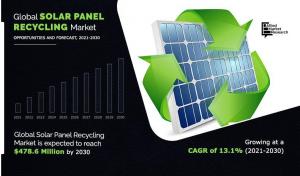Advancing Sustainable Digital Infrastructure through AI-Driven Resource Management
Introduction: Aligning Cloud Computing with Sustainable Development Goals
The operational efficiency of cloud data centers is a critical component in building resilient infrastructure and fostering innovation, directly supporting Sustainable Development Goal 9 (Industry, Innovation, and Infrastructure). The allocation of virtual machines (VMs) to physical servers presents a significant challenge analogous to a complex bin packing problem. Optimizing this process is paramount for achieving sustainability targets, as inefficient allocation leads to substantial energy and resource waste, undermining progress towards global environmental goals.
The Challenge: Resource Inefficiency and its Environmental Impact
Inefficient VM allocation in large-scale data centers has direct consequences for several SDGs. The primary issues include:
- Resource Stranding: Poor allocation wastes server capacity, as remaining resources become too fragmented to host new VMs. This practice contravenes the principles of SDG 12 (Responsible Consumption and Production) by failing to utilize resources efficiently.
- Energy Consumption: Underutilized servers consume significant amounts of energy without performing productive work. This inefficiency is a direct barrier to achieving SDG 7 (Affordable and Clean Energy), which emphasizes improvements in energy efficiency.
- Climate Impact: The excess energy consumption resulting from inefficient resource management contributes to higher greenhouse gas emissions, working against the objectives of SDG 13 (Climate Action).
Traditional AI models that rely on a single, initial prediction of a VM’s lifespan are often inadequate, as a single misprediction can render an entire host server inefficient for an extended duration, exacerbating these environmental challenges.
A Novel Solution: The LAVA Framework for Sustainable Allocation
In response to these challenges, a new system has been developed to enhance VM allocation efficiency, thereby contributing to a more sustainable digital ecosystem. The system, detailed in the paper “LAVA: Lifetime-Aware VM Allocation with Learned Distributions and Adaptation to Mispredictions”, introduces a process of “continuous reprediction” to dynamically manage resources.
Core Components of the System:
- Non-Invasive Lifetime Aware Scoring (NILAS): An algorithm that continuously assesses and updates predictions for a VM’s remaining lifetime as it runs.
- Lifetime-Aware VM Allocation (LAVA): The primary algorithm that uses these dynamic predictions to allocate VMs onto physical servers with maximum efficiency, directly promoting the efficient use of materials and energy as outlined in SDG 12.
- Lifetime-Aware Rescheduling (LARS): A component that adapts to mispredictions by intelligently rescheduling VMs, ensuring sustained operational efficiency and resource optimization.
Conclusion: Driving Progress on Global Sustainability Targets
The implementation of the LAVA, NILAS, and LARS algorithms represents a significant technological advancement in support of the UN Sustainable Development Goals. By moving beyond static, one-time predictions to a dynamic, continuous reprediction model, this system directly addresses key sustainability challenges within the technology sector.
- It fosters sustainable industrialization and innovation in digital infrastructure (SDG 9).
- It promotes resource and energy efficiency, a core tenet of responsible consumption and production patterns (SDG 12).
- It contributes to reducing the energy footprint of data centers, supporting targets for energy efficiency and climate action (SDG 7 and SDG 13).
This lifetime-aware approach to VM allocation provides a clear pathway for the cloud computing industry to minimize its environmental impact and align its operations with global sustainability objectives.
Analysis of Sustainable Development Goals in the Article
1. Which SDGs are addressed or connected to the issues highlighted in the article?
The article’s focus on improving the efficiency of cloud data centers for economic and environmental reasons directly connects to several Sustainable Development Goals (SDGs). The primary SDGs addressed are:
- SDG 9: Industry, Innovation, and Infrastructure: This goal focuses on building resilient infrastructure, promoting inclusive and sustainable industrialization, and fostering innovation. The article describes a technological innovation (the LAVA, NILAS, and LARS algorithms) designed to improve the efficiency and sustainability of critical digital infrastructure (data centers).
- SDG 12: Responsible Consumption and Production: This goal aims to ensure sustainable consumption and production patterns. The article’s central theme is the “efficient resource use” of servers in data centers to avoid “wasted capacity.” This directly relates to the sustainable management and efficient use of resources.
- SDG 7: Affordable and Clean Energy: This goal includes a target to improve energy efficiency. Data centers are significant consumers of energy. By making VM allocation more efficient, the system described reduces the energy wasted by underutilized servers, thereby contributing to greater overall energy efficiency.
2. What specific targets under those SDGs can be identified based on the article’s content?
Based on the article’s discussion of efficiency and innovation, the following specific SDG targets can be identified:
- Target 9.4 (under SDG 9): “By 2030, upgrade infrastructure and retrofit industries to make them sustainable, with increased resource-use efficiency and greater adoption of clean and environmentally sound technologies and industrial processes…”
- Explanation: The article introduces a new AI-based system as a technological solution to upgrade how data center infrastructure operates. The system’s entire purpose is to increase “resource-use efficiency” by packing VMs “as tightly and efficiently as possible,” which aligns perfectly with this target.
- Target 12.2 (under SDG 12): “By 2030, achieve the sustainable management and efficient use of natural resources.”
- Explanation: The article highlights that “poor VM allocation can lead to ‘resource stranding’, effectively wasting capacity.” The proposed solution aims to solve this problem, which is a direct application of achieving more efficient use of physical resources (servers) and the energy required to run them.
- Target 7.3 (under SDG 7): “By 2030, double the global rate of improvement in energy efficiency.”
- Explanation: While the article does not explicitly mention energy, improving the operational efficiency of data centers is a key strategy for improving energy efficiency. By ensuring servers are filled as much as possible, the system reduces energy consumption per unit of computing, contributing to the goal of improving energy efficiency.
3. Are there any indicators mentioned or implied in the article that can be used to measure progress towards the identified targets?
The article does not mention official SDG indicators, but it implies several operational metrics that can serve as indicators to measure progress towards the identified targets of resource and energy efficiency.
- Implied Indicator: Reduction in “Resource Stranding” and “Wasted Capacity”.
- Explanation: The article explicitly identifies “resource stranding” and “wasted capacity” as key problems stemming from inefficient VM allocation. A reduction in these metrics would directly indicate an increase in resource-use efficiency, serving as a practical indicator for progress towards Targets 9.4 and 12.2.
- Implied Indicator: Increase in the number of “Empty Hosts”.
- Explanation: The article states that poor allocation “reduces the number of ’empty hosts'”. An increase in the availability of empty hosts, which can be powered down or used for large jobs, is a measurable outcome of the system’s efficiency. This serves as an indicator of better resource management and potential energy savings (relevant to Target 7.3).
- Implied Indicator: VM Packing Density.
- Explanation: The core goal is to “pack the blocks as tightly and efficiently as possible.” The density of VMs packed onto physical servers is a quantifiable metric. A higher packing density would signify improved efficiency, directly measuring progress towards the sustainable use of infrastructure as outlined in Targets 9.4 and 12.2.
4. Summary Table of SDGs, Targets, and Indicators
| SDGs, Targets and Indicators | Targets | Indicators |
|---|---|---|
| SDG 9: Industry, Innovation, and Infrastructure | Target 9.4: Upgrade infrastructure and industries for sustainability and increased resource-use efficiency. | Implied Indicator: Increased VM packing density and a quantifiable reduction in “wasted capacity” on physical servers. |
| SDG 12: Responsible Consumption and Production | Target 12.2: Achieve the sustainable management and efficient use of natural resources. | Implied Indicator: Rate of reduction in “resource stranding,” measuring the efficiency of physical server utilization. |
| SDG 7: Affordable and Clean Energy | Target 7.3: Double the global rate of improvement in energy efficiency. | Implied Indicator: Increased number of “empty hosts” that can be powered down, indicating improved energy efficiency of the data center. |
Source: research.google







